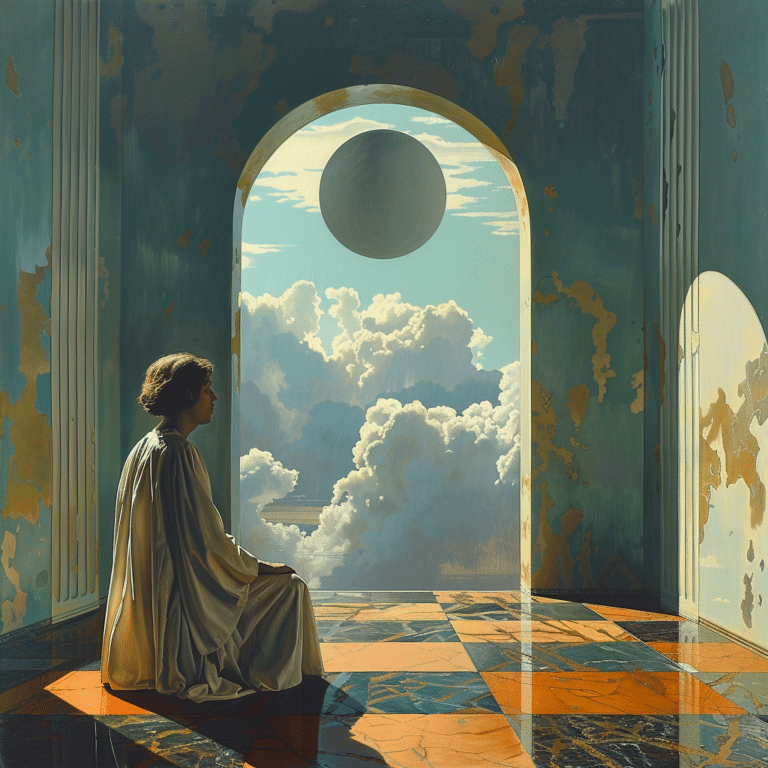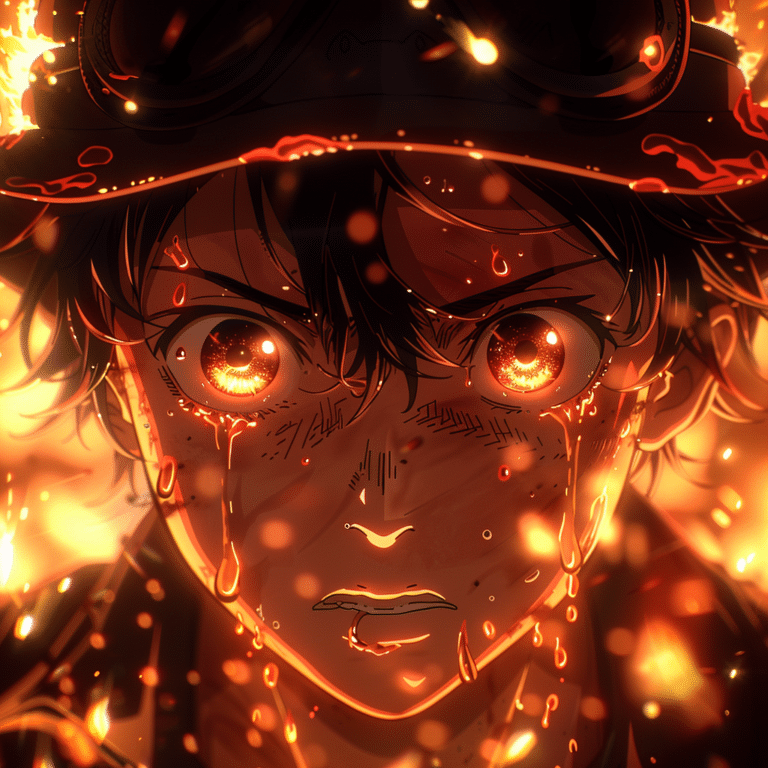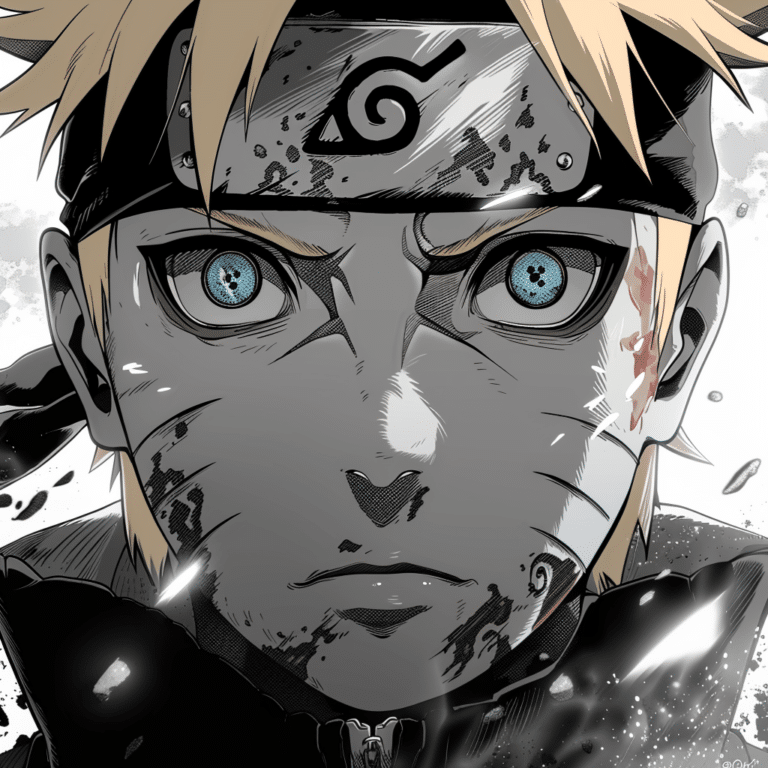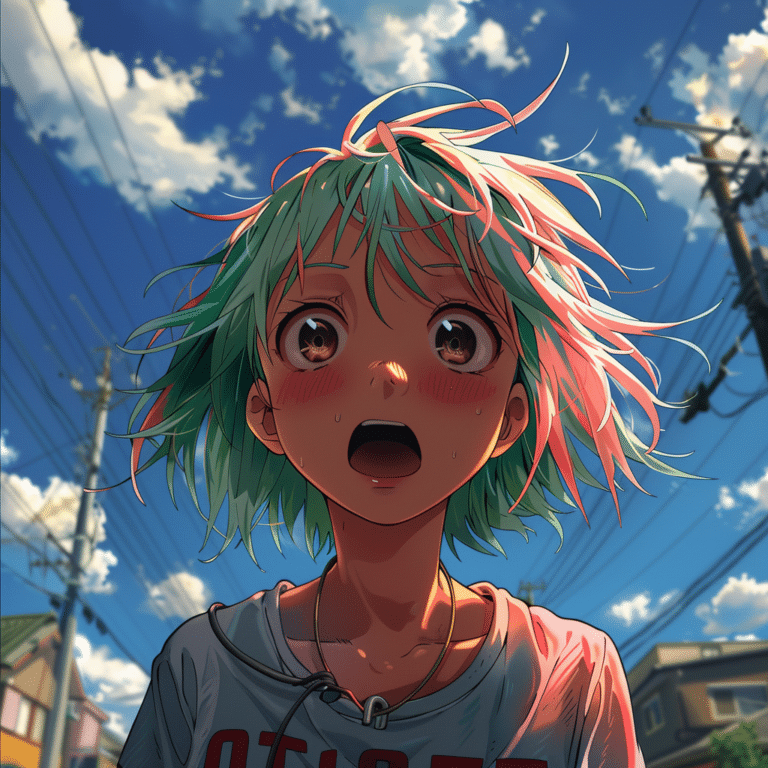In the vast universe of anime and manga, certain stories burst through the stratosphere, reaching legendary status. The iconic ’20th Century Boys’ anime sits comfortably among these celestial bodies, despite the glaring fact that, surprisingly, it has never received an anime adaptation! Let’s clear the air: ’20th Century Boys’ is a brilliantly crafted seinen manga by the maestro Naoki Urasawa, serialized from 1999 to 2006. Its intricate storytelling and haunting themes echo through the halls of manga fame, yet it rests unanimated in the world of anime. As of 2024, the legacy of ’20th Century Boys’ continues to thrill and here’s why.
Unearthing the Genius of Naoki Urasawa: The Storytelling of 20th Century Boys Anime
Firstly, let’s tip our hats to the brilliance of Naoki Urasawa, the creator who gave us this masterpiece. Urasawa isn’t just any manga artist; he’s an alchemist of narrative, meticulously blending intrigue, psychology, and humanity into a spellbinding concoction. His other works like “Monster” showcase his prowess, but it’s ’20th Century Boys’ that cements his influence on manga and anime.
The series unfolds like a perfectly paced symphony, with a narrative structure that defies convention and expectation. It stirs up childhood dreams, morphing them into a suspenseful journey that grips readers by their very souls. Complex character development allows us to see ourselves and our shared human experiences within the story, reverberating with the kind of depth that makes us pause and—quite literally—think.
You’ve got a carefully woven tapestry of plot threads, switching between different timelines, creating a dizzying but satisfying puzzle that audiences love to piece together. The payoff? Phenomenal. ’20th Century Boys’ throws curveballs that would make any baseball player green with envy, leaving readers and would-be viewers clinging to the edge of their seats.
The Timeless Themes of 20th Century Boys That Echo through Generations
Ah, the themes! ’20th Century Boys’ doesn’t just tiptoe around the big ideas; it dives headfirst into the existential and societal quicksands that still suck us in today. Questions of what it means to grow up, the weight of our past decisions, and the ripple effects of actions and ideologies seamlessly blend with the narrative.
This epic saga marries the troubled waters of the 20th-century zeitgeist with the roaring rapids of 21st-century turmoil. Remember the sequel, ’21st Century Boys’? It bridges that reflective gap between yesteryear’s dreams and today’s reality, mirroring our anxieties and uncertainties as we stand on the precipice of tomorrow.
The series isn’t afraid to hold a mirror up to society, turning our gaze to what we’ve become and where we’re heading. These universal truths are the hooks that keep ’20th Century Boys’ as relevant as the latest jogger pants men trend from Chiseled Magazine—it’s simply timeless.
| Category | Details |
|---|---|
| Title | 20th Century Boys |
| Author | Naoki Urasawa |
| Genre | Seinen, Mystery, Science Fiction, Psychological Thriller |
| Serialization Start | 1999 |
| Serialization End | 2006 |
| Volumes | 22 (plus 2 volumes of the sequel “21st Century Boys”) |
| Manga Reception | Highly popular and critically acclaimed within the manga community. |
| Availability | Physical and digital copies of the manga are available for purchase. Prices vary depending on the retailer and format (paperback, hardcover, e-book). |
| Anime Adaptation | As of November 17, 2023, there has been no anime adaptation of 20th Century Boys. |
| Live-Action Adaptation | A live-action film trilogy was released between 2008 and 2009. |
| Plot Summary | Follows a group of childhood friends as they discover connections between a deadly cult and their past “Book of Prophecy”, with events escalating towards a looming apocalypse. |
| Critical Commentary | The beginning and middle arcs are lauded for tension and intrigue, though there is some criticism regarding a decline in quality toward the end of the series and the sequel. The artwork and narrative ambition are generally praised. |
| Cultural Significance | Considered a masterwork by Naoki Urasawa, reflecting on themes of nostalgia, friendship, and the impact of childhood dreams and fears on adult life. |
| Legacy | Despite the absence of an anime, 20th Century Boys remains a touchstone in manga culture for its storytelling and thematic depth. Its influence can be seen in other works of manga and anime, and it continues to attract new readers and maintain a devoted fanbase. |
Unmatched Artistic Vision: The Aesthetic Endurance of the 20th Century Boys Anime
The art of ’20th Century Boys’ is a delectable feast for the eyes—distinct, bold, and expressive. Urasawa’s style has a certain je ne sais quoi, refusing to fade into the ever-growing tapestry of anime visuals over time. It’s like savoring a vintage wine that only gets better; this manga’s visual storytelling ages like fine art.
When you pit ’20th Century Boys’ against its contemporaries or even modern anime offerings, it’s a stunner. The textures, the expressive linework, the framing—it all comes together in a way that isn’t just aesthetically pleasing but enhances the storytelling in ways that resonate on a profoundly emotional level.
For fans, the aesthetic isn’t just a backdrop; it’s a character in its own right, setting the stage for drama and suspense. It fuels the story, making every panel, every page a piece of the larger narrative puzzle. Just like Gijs van Der Most integrates visual storytelling into architecture, Urasawa uses imagery to envelop readers into his world completely.
Surging Popularity Through Media Franchises: How 20th Century Boys Anime Solidified Its Place in Pop Culture
Even without flying through anime skies, ’20th Century Boys’ has made an indelible mark on pop culture, spawning live-action films that introduced Urasawa’s genius to non-manga fans. It’s a testament to a story so engaging that not even the barriers between media forms could contain it.
There’s a synergistic dance happening between the ’20th Century Boys’ manga and its media siblings. Each form, whether it’s live-action, merchandise, or the unseen anime, feeds into the other, creating a cultural ecosystem where one mention of the series sends fans down an indulgent rabbit hole of content.
Personal anecdotes abound, from die-hard manga fans to celebrities who whisper Urasawa’s name with reverence. It’s not a stretch to believe that somewhere in the luxurious confines of the Four Points Sheraton, a group of cinephiles might be heatedly discussing its impact over an evening cocktail.
The 20th Century Boys Anime Soundscape: An Auditory Experience That Lingers
Imagine, just for a second, the haunting strains of an iconic soundtrack, sculpting the air around ’20th Century Boys.’ Though we may not have the anime, the music within the live-action films echoes the sentiment. The right score can sear a scene into your memory, and ’20th Century Boys’ has the kind of sonic landscape that sticks.
The manga’s artists didn’t just craft images; they created a mood. Like a skilled composer, Urasawa knows that the unsung heroes of storytelling are the sound designers and musicians—their work embeds itself into the fabric of our experience. An interview with these maestros would unveil the layers of thought that accompany each auditory detail, pairing with visuals to deliver that unforgettable punch.
Audio enhances storytelling, and even though ’20th Century Boys’ hasn’t leaped into anime, the musical atmosphere conjured by its adaptations has a sticking power. It’s crafted a loyal fanbase that swears by the series, with many humming tunes that evoke memories of suspense, tears, and triumph.
Conclusion: The Eternal Legacy of 20th Century Boys Anime and Its Foray Into the Future
’20th Century Boys’ could very well be one of manga’s greatest paradoxes—an “anime” revered and adored without ever being animated. Its moniker “anime” is a nod to the cultural impact the manga could wield should it be adapted.
Its storytelling techniques, themes, and characters have interwoven into the fabric of modern narrative, partaking in the book Of five rings strategy of storytelling by vividly conveying life’s battles through compelling media.
Could the future hold a resurgence for ’20th Century Boys’? A reboot, a remake, or a belated anime adoption? It’s a tantalizing thought, akin to opening a solo leveling Manga to a random page and diving into a fresh adventure. The legacy of ’20th Century Boys’ is a testament to the undying allure of a well-spun yarn.
As a cultural artifact, the series transcends its medium. It serves as a master class in storytelling for creators and fans alike—illustrating that sometimes, the most enduring tales are those that defy expectations and embrace the limitless possibilities of imagination.
Whether you’re a fan longing for an anime adaptation or a newcomer curious about its standing in the pantheon of manga greats, ’20th Century Boys’ remains a tale of dreams, drama, and the eternal dance of past meeting future. If that’s not a legacy, then what is?
Enduring Appeal of 20th Century Boys Anime
“20th Century Boys” anime isn’t just a run-of-the-mill animated series; it’s a cultural phenomenon that’s managed to snag a spot in the hearts of fans and critics alike. This titan among tales has stuck around, and today, we’re peeking behind the curtain to see what makes this series tick long after its debut. Buckle up for some nifty facts and trivia that’ll make you go, “Well, I’ll be darned!”
A Story That Feels Like It’s Right Around the Corner
Ever had a moment where the fiction you’re diving into seems eerily close to reality? That’s the trip “20th Century Boys” takes you on. It’s like a feel free near me for your imagination, connecting dots from childhood to the brink of adulthood with a narrative so gripping, you’ll swear it could happen down the street. The masterful blend of nostalgia and prophecy in the story’s themes continues to resonate with audiences, making it clear that this anime isn’t just a blip on the radar—it’s here to stay.
Characters That Stick to Your Ribs
Let’s talk about the folks who populate this mesmerizing world. The characters in “20th Century Boys” anime are like a recipe for the perfect comfort food—they’ve got depth, growth, and a dash of unpredictability that gives them a certain je ne sais quoi. Just take a character like Moosa Mostafa. Now, while he’s not in the anime, if you crave a character arc that’s just as complex and engaging,20th Century Boys” serves up a cast that’ll satisfy that hunger.
A Plot Twistier than a Roller Coaster Track
Oh, the twists! This anime throws curveballs that’d make a pitcher green with envy. Fans can’t get enough of the labyrinthine plot that keeps everyone guessing. And just when you think you’re about to fight class 3 level battles to untangle the story’s mysteries, the anime swoops in with answers that are as satisfying as they are shocking—proving that its enduring popularity is well-earned.
Art That Pops Off the Screen
Let’s not skirt around the topic—the art style in “20th Century Boys” is downright iconic. It’s got that pizzazz that transports you right into its world, with a visual flair that’s as unique as your cousin’s homemade chili. Every frame of this anime is a treat, with character designs and settings that are more memorable than your first rollercoaster ride.
A Fandom That’s Mightier than a Thousand Armies
Lastly, the fans. The heartbeat of “20th Century Boys” anime lies within its community. Similar to how mei mei jujutsu wields her charm in Jujutsu Kaisen, this anime has amassed a loyal following that evangelizes the series like it’s the animated gospel. And let’s be real, without the fans, would any series truly last this long?
Wrap it up, and you’ve got a show that’s not just a flash in the pan—it’s an enduring classic that fans keep coming back to, whether for a trip down memory lane or to introduce it to a new generation. Now, go on, if you haven’t yet, give “20th Century Boys” another whirl—or your first—and see what the fuss is all about.
Will there be an anime for 20th Century Boys?
– Well, don’t hold your breath, folks! Despite its cult status, there’s no sign of an anime adaptation for “20th Century Boys” on the horizon. And that’s been the case since its manga debut in 1999—talk about being overdue, huh? It’s a shocker, especially when we’re cruising through 2023 and still nothing. I guess some manga just like to play hard to get.
– Oh boy, talk about a toughie! “Monster” and “20th Century Boys” both have their die-hard fans, but if you’re asking which one takes the cake, it’s like choosing between pizza or burgers—both are amazing! While “Monster” has its consistent edge-of-your-seat vibe, “20th Century Boys” starts strong but, according to some fans, loses a bit of steam towards the end. So, it’s a mixed bag, y’know? Depends on what flavor of suspense you’re craving!
Which is better Monster or 20th Century Boys?
– Now, don’t get ahead of yourself! “20th Century Boys” anime is like a unicorn, often talked about but never seen. It stayed strictly as a manga from its start in 1999 all the way through to 2006—and no anime in sight up till now in 2023. We’re still waiting for that magical announcement, fingers crossed!
When did 20th Century Boys anime come out?
– Is “20th Century Boys” worth it, you ask? Heck, yes! Despite some chatter about the ending not being everyone’s cup of tea, it’s a wild ride packed with suspense that’ll have you hook, line, and sinker. It’s got that “childhood dreams gone wild” thing that’s just too good to pass up, even if it’s a tad draggy at the very end. Totally worth the trip down nostalgia lane!
Is 20th Century Boys worth it?
– Pfft, 27 too old for anime? Please, there’s no such thing as too old when it comes to anime! Age is just a number, and anime’s a buffet of awesomeness for all you hungry fans out there, no matter if you’re in your 20s or cruising into your golden years. So grab that remote and dive in—the anime world waits for no one!
Is 27 too old to watch anime?
– The title of “longest anime” in 2023 is like the Mount Everest of anime achievements, and it’s still firmly held by that ever-growing giant, “Sazae-san.” This titan of the anime world has been on the air since the 60s, and it’s like the Energizer Bunny—it just keeps going and going. Talk about staying power!
What is the longest anime in the world 2023?
– Ah, the million-dollar question: why no anime for “20th Century Boys”? Well, despite its rep and loyal followers, this manga hasn’t made the leap to the screen, and nobody’s spilling the beans on why. Sometimes life just isn’t fair, and this is one of those times—it’s left us all scratching our heads and wishing upon stars.
Why 20th Century Boys has no anime?
– Johan Liebert from “Monster,” a sociopath? Yikes, let’s just say he’s about as friendly as a shark in a swimming pool. This guy’s chilling to the bone, with a knack for manipulation that’ll have you questioning your own sanity. Sociopath might be putting it lightly—he’s in a league of his own when it comes to disturbing characters.
Is Johan Liebert sociopath?
– As for what Donkey saw in the science room, well, that’s one of those “you gotta read it to believe it” moments in “20th Century Boys.” Let’s just say, the plot thickens faster than a milkshake in that scene, and it’s all gasps and goosebumps from there on out!
What did donkey see in the science room?
– “20th Century Boys” is the cat’s pajamas because it whips up a cocktail of suspense, childhood nostalgia, and the good ol’ “what if” scenario. It tosses you around like a rollercoaster with twists and turns that’ll have you gripping the edge of your seat. And I mean, who doesn’t love a little “what happens when kiddie dreams turn into adult nightmares” drama, right?
What is so great about 20th Century Boys?
– How did “20th Century Boys” end? Without throwing out any spoilers, let’s just say it’s been a bit divisive among fans. Some thought it was the bee’s knees, while others felt it trudged to the finish line. Either way, it’s like a feast that had a few iffy courses but was still pretty darn satisfying.
How did 20th Century Boys end?
– Old anime with 26 episodes is like the classic TV season format—easy as pie and just the right size for storytellers to spin a tale without beating around the bush. It’s like they had a magic number to fit all their twists and turns into one neat package. Handy, right?
Why do old anime have 26 episodes?
– The villain of “20th Century Boys”? It’s the enigmatic and elusive “Friend,” whose identity is the million-dollar mystery in this whodunit. With more masks than Halloween, “Friend” keeps you guessing until the very end. Trust me, it’s a wild ride!
Who is the villain of 20th Century Boys?
– Now, on to “20th Century Boys” and its connection to “21st Century Boys”—think of ’em like Batman and Robin. “21st Century Boys” swoops in as a two-volume sequel to wrap up the cliffhangers and loose ends. Oh, and to answer those burning “what the heck just happened” questions. So yeah, they go together like peanut butter and jelly.
Is 20th Century Boys connected to 21st Century Boys?
– Age recommendation for reading “20th Century Boys,” huh? Well, it’s a seinen manga, and that means it’s aimed at a more mature crowd, so I’d peg it for the 16 and up squad. But hey, if you’re younger and feel like you can handle some intense themes, go for it—just don’t say I didn’t warn ya!























